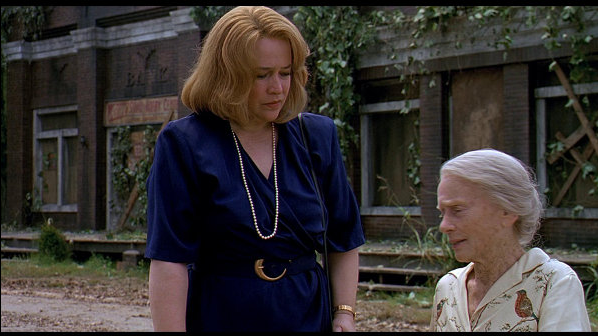
Unearthing the Southern Gothic Roots in Whistle Stop
At first glance, Fried Green Tomatoes appears to be a gentle story about friendship and nostalgia. But beneath its charm lies a rich tapestry of Southern Gothic elements — a genre marked by decay, eccentricity, racial tension, and moral ambiguity. Through its vivid setting, flawed characters, and unspoken horrors, the film revives and redefines a literary tradition that exposes the haunted heart of the American South.
Gothic Atmosphere Hidden in Sunshine
The Southern Gothic genre typically thrives on dark, crumbling plantations and grotesque villains. But in Fried Green Tomatoes, the horror is subtle — and domestic. It’s in the polite racism of small-town Alabama, in the quiet suffering of abused women, and in the moral dilemmas that fester under the surface.
The Whistle Stop Café might be cozy, but its surrounding world is rife with secrets, suspicion, and violence. The murder of Frank Bennett and the possible cannibalistic cover-up echoes classic Gothic tropes: the bad man gets what’s coming, but justice comes in shadows, not courts.
Characters as Southern Archetypes
Idgie is the archetypal Gothic heroine turned on her head — wild, independent, and morally ambiguous. Sipsey, the wise yet quietly revolutionary Black cook, embodies the “mammy” stereotype only to subvert it with agency and subtextual power. And Ruth is the gentlewoman in distress, trapped in a nightmare disguised as marriage.
Each character plays their part in a Southern morality tale where the line between good and evil is blurred, and virtue often hides in the outcasts.
Decay, Death, and Dignity

The story thrives on themes of loss — Buddy’s tragic death, Ruth’s illness, Evelyn’s midlife despair. But these are not simple tragedies. They are portals to transformation. As with traditional Southern Gothic works, death in Fried Green Tomatoes is not an end but a rebirth — of purpose, courage, and identity.
The café, once a symbol of communal joy, becomes a haunted relic by the time Evelyn visits. Overgrown and abandoned, it reflects a Southern world that can no longer escape its past.
A Feminist Reclamation of the Genre
Unlike many Southern Gothic stories written by men, Fried Green Tomatoes is rooted in female voices and experiences. It takes the genre’s tropes — the grotesque, the haunted, the rural — and reframes them through women’s resilience, humor, and care. The result is not just revisionist Gothic — it’s a feminist Gothic.
The film doesn’t reject the dark undercurrents of the South; it reclaims them as part of women’s survival and storytelling.
Conclusion: Sweet Tea with a Shot of Darkness
Fried Green Tomatoes is no mere sentimental drama. It’s a Gothic revival in disguise — a sun-drenched tale of ghosts, graves, and justice served cold. It invites viewers to sip slowly, then taste the grit beneath the sugar.
